Posted on: June 5, 2017
June 5, 2017 — Towering above the Cardboard Regatta teams, the families enjoying picnics, and the music fans taking in concerts under the stars, the stately oaks and hickory trees that rise up around Lake Ellyn Park are memorable and iconic.
But oaks and hickories don’t live forever. To ensure that future generations of Glen Ellyn residents will have the opportunity to enjoy the graceful beauty, shade and ecological advantages these trees bestow on the area, the Glen Ellyn Park District has been working toward restoring the park’s oak woodland and creating conditions that will encourage new trees to germinate, grow and flourish.
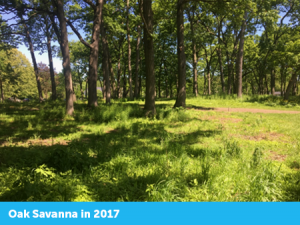 Because so many natural elements are inter-related, the park district is also focusing on restoring and recovering other plant species and even the soil in the park.
Because so many natural elements are inter-related, the park district is also focusing on restoring and recovering other plant species and even the soil in the park.
Once accounting for more than half the trees in the region, oaks have become much less common. Urban development and the introduction of invasive species have resulted in dramatically less oak reproduction, said Renae Frigo, district naturalist.
So almost five years ago, Frigo said, a restoration effort was launched.
Traditional methods of caring for the park were discontinued in favor of letting nature pursue its destiny.
For example, Frigo said, mowing was curtailed and fallen leaves were not removed.
“Constant mowing compacts the soil, leaving less space for water and nutrients to percolate into the ground,” she said. “Leaves are now allowed to naturally decompose, adding to the humus layer which creates a spongier soil. This will benefit the trees and plants.”
Frigo said hundreds of plant species, including spring wildflowers such as red trillium, wood anemone, spring beauties, trout lily, Solomon’s seal and Virginia bluebells, have been found in the park.
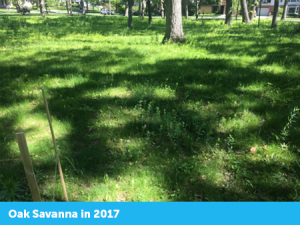 Efforts are being made to squelch weed growth. These include trimming, spot herbicide spraying and removal of seed heads. Prescribed burns also are used to reduce weed populations, which are not adapted to fire as many native plants are.
Efforts are being made to squelch weed growth. These include trimming, spot herbicide spraying and removal of seed heads. Prescribed burns also are used to reduce weed populations, which are not adapted to fire as many native plants are.
Recently, park staff made a startling find: the presence of a couple of unusual plant species in Lake Ellyn Park.
One-flowered cancer root, a plant that lacks chlorophyll and must rely on a host plant for nutrients, is considered rare or vulnerable in 17 states and five Canadian provinces. Frigo said several noted botanists have visited the park to see the rare cluster of these plants for themselves.
Last summer, Michigan lilies made their return to the park after decades of absence.
Frigo said the two plants’ presence can partially be attributed to the park district’s recently adopted restoration policies.
The restoration plan puts a high priority on nurturing remnant plant communities, reintroducing plants that likely were here before the village was settled, allowing young oaks to take root and grow and welcoming pollinators and wildlife that rely on native plants.
Because plant life cycles extend beyond one year, immediate results are not always achieved, she said. But patience and time can deliver results that can persist and survive for years to come.
A few staff members had the pleasure of walking the woodland with renowned botanist Gerould Wilhelm, co-author of the highly referenced book Plants of the Chicago Region. Mr. Wilhelm completed an informal plant survey as he walked the site. During that visit in 2015, he recorded a total of 61 species, of which 48 were native.
The Park District is currently adding more native woodland plants in sections that have been dominated by turf grass and its associated weeds like dandelions, creeping Charlie and plantains. Approximately 3,400 plants are being installed. Some of the beautiful flowers you’ll see blooming in the coming years include Jacob’s ladder, wild geranium, wild columbine, woodland phlox, shooting star, and a mix of interesting grass-like sedges.
Interested in learning more? The Chicago Tribune featured an informative article on May 30, 2017, on the restoration of Illinois’ oak savannas. Read it here!
BEFORE & AFTER: Lake Ellyn Park Oak Savanna Restoration
Before pictures taken on May 8, 2013. After pictures taken on May 29, 2017.
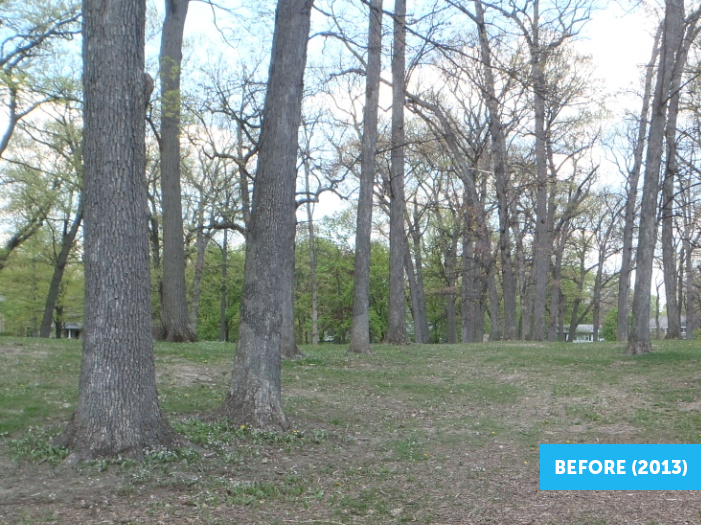

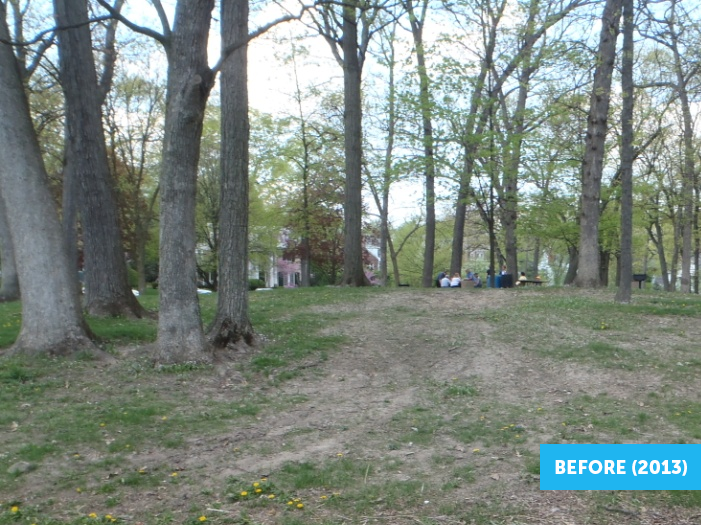
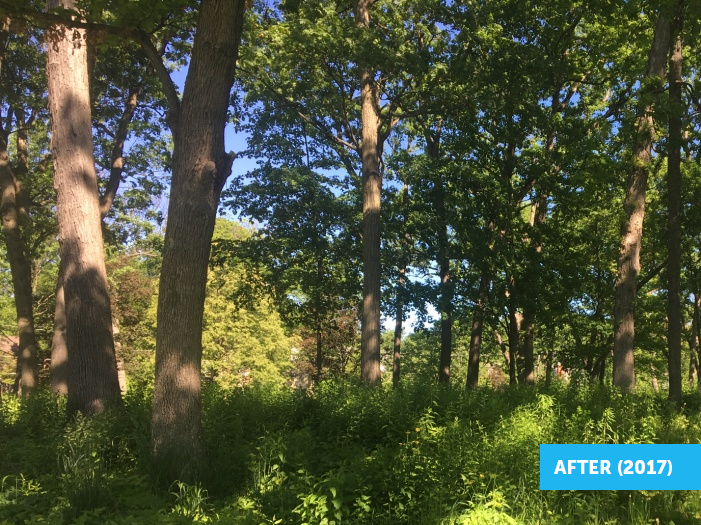
POSTED: June 5, 2017
 Because so many natural elements are inter-related, the park district is also focusing on restoring and recovering other plant species and even the soil in the park.
Because so many natural elements are inter-related, the park district is also focusing on restoring and recovering other plant species and even the soil in the park. Efforts are being made to squelch weed growth. These include trimming, spot herbicide spraying and removal of seed heads. Prescribed burns also are used to reduce weed populations, which are not adapted to fire as many native plants are.
Efforts are being made to squelch weed growth. These include trimming, spot herbicide spraying and removal of seed heads. Prescribed burns also are used to reduce weed populations, which are not adapted to fire as many native plants are.


